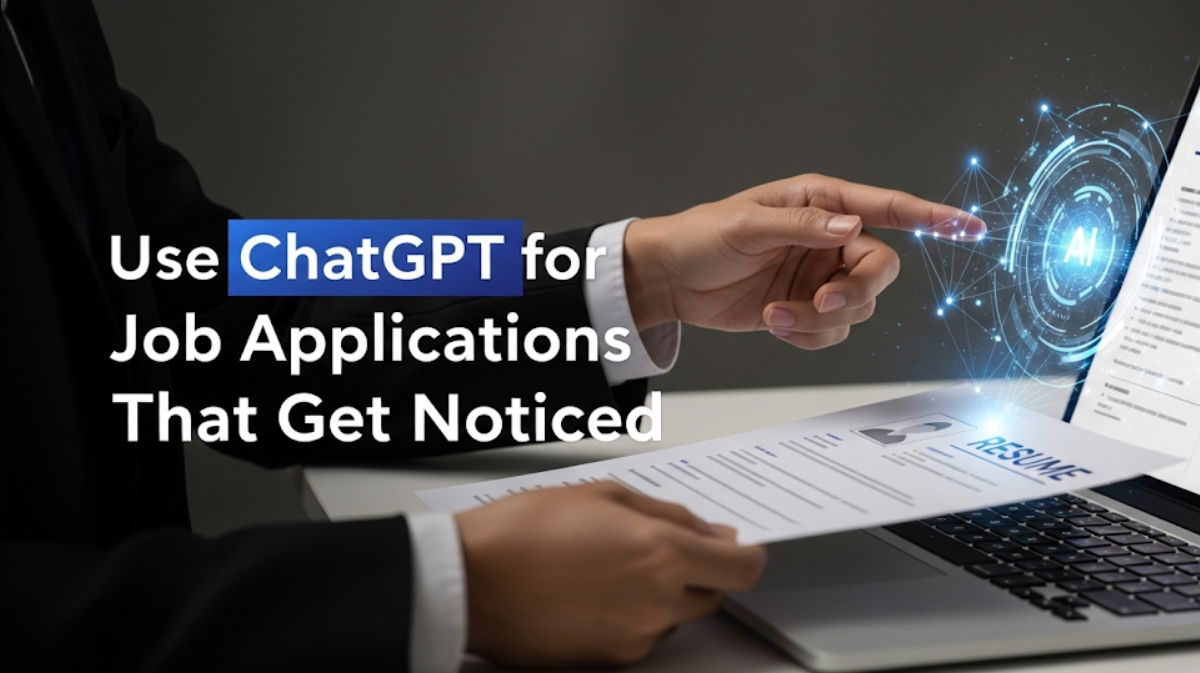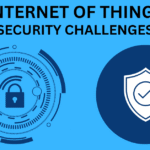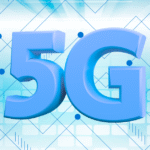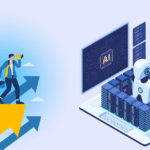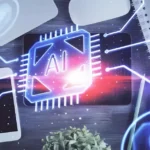Searching for a conventional 9 to 5 position can be like searching for the proverbial needle in the haystack. You apply for a million jobs but find your mailbox still empty. The problem? Your job application is one of the many, and most others are just noise. And… what if you can use artificial intelligence to make your application unique?
The game is completely changing for job seekers building applications that will truly separate their applications from the chaff, courtesy of ChatGPT. This robust AI-driven tool can assist you in writing impressive resumes, crafting tailor-made cover letters, and even prepping up for interviews. The best part? You do not even have to be a tech-savvy person to use it properly.
Find out how you can use ChatGPT to turn your job search from frustrating to successful in this guide. From writing resumes that get read to answering interview questions like a pro. You end up with a fully armed arsenal to craft job applications so powerful that not even the most selective managers can ignore you.
How ChatGPT Is Revolutionizing Job Applications
And so many standard job applications are doomed to fail, because they’re dry, boring, and just plain off the mark. They see hundreds of resumes a day, and most have only a small chance of getting to the next stage. By generating targeted, professional, and engaging application materials, ChatGPT offers a way out.
Why ChatGPT is so useful for job seekers:
- Scale Personalization — Create an individual application for every job without starting from scratch
- Use the vernacular — Develop descriptions that showcase your experiences effectively
- Optimizing for keywords — Use the terms that applicant tracking systems (ATS) search for
- Time-saving — Save up to 70% time on application preparation
- Confidence booster — Helps you feel prepared and well-equipped for your job search
The point is using ChatGPT smartly and not just requesting it to “write my resume.”
How To Use ChatGPT for a Successful Job Search
Even before you expand on each application, make sure you configure ChatGPT for best performance.
Choose the Right ChatGPT Version
Free ChatGPT (GPT-3.5):
- Great for simple resume and cover letters
- Works for basic job descriptions & bullet points
- Limited conversation length
- Perfect for entry-level positions
ChatGPT Plus (GPT-4):
- Great comprehension of complex occupation specifications
- Better at industry-specific language
- Longer conversations for detailed applications
- Gives you enough options for high-end positions and niche roles
Create Your Master Profile
Feed ChatGPT your entire professional data as a single comprehensive prompt:
I am making job applications with you.
Personal Info: [Name, location, contact details]
Education: [Degrees, schools, graduation dates, relevant coursework]This is often your first impression with a prospective employer. ChatGPT can generate copies that escape automated filtration and appeal to real human readers.
Work Experience: [All jobs you have ever worked with dates and companies]
Skills: [Technical skills (software/certs), languages (spoken/programming)]
Career Goals: [desired role and industries preferred]
Notable Achievements: [awards, recognitions, major projects, etc.]
Please acknowledge that you have this information while offering help for job applications.
Built on this basis, ChatGPT can follow along with your job seeking process.
Crafting Killer Resumes with ChatGPT
This is often your first impression with a prospective employer. ChatGPT can generate copies that escape automated filtration and appeal to real human readers.
The Strategic Resume Approach
Use ChatGPT as a resource when writing your resume (instead of asking it to write the whole thing):
Professional Summary Optimization
Use this prompt structure:
Create a professional summary with my professional experience ([Job Title] and [Type of Company]). Key requirements from job posting: [highlighted requirements from the job description]. Write 3-4 sentences detailing my skills and the most important qualifications.
Experience Section Enhancement
Convert simple job descriptions into demonstrable achievement statements:
[Job title] that [basic duty description]. Write this in 3-4 bullet points demonstrating the impact you made in quantifiable terms and with action verbs. Concentrate on accomplishments – not solely responsibilities.
Skills Section Tailoring
This is the skills part of the job posting: [copy professional abilities here]. Which of these skills should I highlight on my resume per my background? Which of these skills is most critical? Provide the professional words using that.
Resume Format Optimization
| Resume Section | ChatGPT Strength | Best Practice |
| Contact Information | Basic formatting | Include LinkedIn, avoid unprofessional emails |
| Professional Summary | Strong | 3-4 lines max |
| Work Experience | Excellent | Focus on achievements |
| Education | Good | Add relevant coursework (for new grads) |
| Skills | Very Strong | Tailor using job posting keywords |
| Additional Sections | Good | Make sure to make these role-based |
ATS-Friendly Resume Tips
Resumes are scanned by an Applicant Tracking System before they ever reach a human. Optimizing for these systems is something ChatGPT can provide assistance with.
- Keyword Integration: Use ChatGPT to identify key keywords in job postings
- Simplify formatting: Take complex format and get an ATS-friendly form maintained via ChatGPT
- Organization of Sections: Resume section order ideas
Example prompt:
Analyze this job posting: [paste job description]. What are 10-15 keywords that would be recommended in my resume? Now show me how I should naturally use these keywords to describe my experience.
Cover Letter Tips & Examples
Cover letters are such a pain, but if you manage to make one work for yourself, then it enables you to stand out ahead of the rest. ChatGPT is most ideal when it comes to tailoring your cover letters in a more personal and interesting way.
The Three-Paragraph Formula
Paragraph 1: The Hook
- Mention the specific position
- Give one good reason you are perfect for the job
- Reference the company by name
Paragraph 2: The Evidence
- Highlight 2-3 relevant achievements
- Link your story to what they are experiencing
- Show knowledge of the company
Paragraph 3: The Close
- Express enthusiasm
- Include a call to action
- Professional sign-off
ChatGPT Cover Letter Prompts
Opening Paragraph:
Craft cover letter introductory paragraph for [Company name] [Job Title] application. I am [your best attribute]. Make it conversational but professional.
Body Paragraph:
Write the middle paragraph connecting my experience to what they are seeking in their available position. They need [job requirements]. My experience is relevant to [matching qualifications]. Use concrete examples and quantified outcomes.
Closing Paragraph:
Write a solid ending paragraph expressing desire to join the company and take on this position. I would love to talk with you about how my [key strength] can contribute to your team. Add a professional call to action.
Industry-Specific Customization
Tech Industry:
- Technical skills and project outcomes come to the fore
- Mention specific technologies and methodologies
- Keep it concise and results-oriented
Creative Fields:
- Show personality and creative thinking
- Examples of specific projects or portfolio pieces
- Demonstrate understanding of brand/aesthetic
Finance/Business:
- Focus more on analytical skills and business impact
- Use industry terminology appropriately
- Focus on quantifiable achievements
Healthcare:
- Highlight patient care experience
- Mention relevant certifications
- Show commitment to the field
Prompt example:
I am applying for a [job title] in the field of [industry]. Customize my cover letter to meet industry norms and lingo. The company culture seems [formal/casual/innovative]. Adjust the tone accordingly.
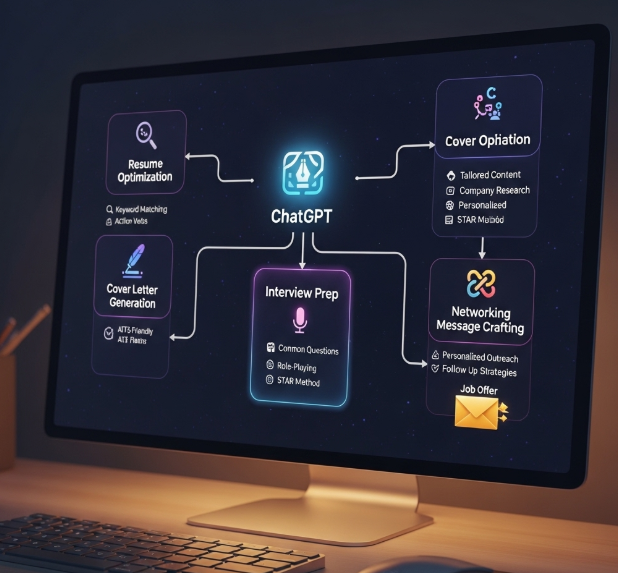
LinkedIn Profile Optimization
It is literally an extended version of your resume. This is where ChatGPT can be a boon to optimize it for better visibility and engagement.
LinkedIn Headline Creation
It shows up everywhere on LinkedIn and is the reason people click through to your profile.
Formula: [Job Title] | [Key Skill/Industry] | [Value Proposition]
Example prompt:
Create LinkedIn headline for someone like me looking for [target role]. Add keywords recruiters look for. Keep the headlines unique and emphasize different aspects of my strength.
LinkedIn Summary Optimization
Your LinkedIn Summary is in many ways the story of your career, told in a way that makes it interesting to potential employers or clients.
Structure:
- You: What you do now
- Background: How you got here
- Expertise: What you’re great at
- Goals: What you’re looking for
- Engage: Call to action
Prompt:
Help me draft a LinkedIn summary based on my background. Make it casual yet professional, not formal resume style text. Include keywords for [target industry/role]. End with a call to action to connect and have further discussions.
Experience Descriptions
LinkedIn gives you more words than a resume to really flesh out your roles.
Expand my [Job Title] experience on LinkedIn. Provide more information about the company, impact of my role and key achievements. Keep it interesting to read but also optimized for [target industry] keywords.
Interview Preparation Made Simple
With ChatGPT as your personal interview coach, you can practice common questions and craft them into attractive and impressive answers.
Common Interview Questions
Behavioral Questions:
Base your answers around the STAR method (Situation, Task, Action, Result)
Example prompt:
Help me use the STAR method for “tell me about a time you overcame a challenge.” Example from my background: [describe the situation]. When read aloud, the answer should take about 60-90 seconds.
Technical Questions:
For role-specific questions — ChatGPT can aid in structuring your knowledge.
They will probably ask me about [technical topic/skill] in my interview for [role]. Help me generate a good paragraph answer which clearly indicates my experience without making it too technical for interviewers who are not experts.
Company Research and Questions
Demonstrate interest by preparing thoughtful questions.
I am interviewing at [company name] for the position of [position]. Based on company news, company culture & industry trends, give me 8-10 really thoughtful questions I could ask my interviewer. Create a blend of strategic, role-specific and culture questions.
Mock Interview Practice
Role-Playing Prompts:
Act as a hiring manager from [company type] interviewing me for [position]. Ask behavioral and technical questions – one at a time. Wait for my response before moving on to the next question. Make it realistic but supportive.
Salary Negotiation Preparation
Help with salary negotiation for [job title] in [location/industry]. The range according to my research is [salary range]. With my experience, what points should I emphasize to support asking for the top end of the range?
Advanced ChatGPT Strategies for Job Seekers
After you master the basics, these advanced techniques will give you an edge over your competition.
Creating Multiple Resume Versions
Different roles require different emphasis. Create targeted versions efficiently:
I have these three job applications: [roles] and [companies]. What should I emphasize in my background to apply for each role? Develop three different professional summaries based on these targeted positions.
Industry Transition Strategies
Changing careers? How ChatGPT can reframe your experience:
I’m transitioning from [current industry/role] into [target industry/role]. I need help transferring my skills and making myself appealing to employers in the new field. Emphasize what about my experience would offer a unique perspective to this role.
Networking Messages
Write personal outreach messages for LinkedIn and emails:
Help me write a LinkedIn message to someone at [target company] in [department]. I would like to learn more about [specific role or general opportunities]. Ensure it is professional and not pushy. Keep it under 200 characters.
Follow-Up Communications
Thank You Notes:
Write follow-up email template for interviewing for [position] at [company name]. Say thank you and refer to these specific subjects we discussed: [list 2-3 topics]. Express continued interest and professionalism. Keep it concise but memorable.
Application Follow-Ups:
I submitted my application to [company] for [position] two weeks ago and haven’t received a response. Compose a polite follow-up email that demonstrates interest but avoids being pushy. Add a quick mention of my background.
Common Mistakes to Avoid
Despite ChatGPT’s assistance, there are some mistakes that can harm your job search.
Over-Relying on AI
Don’t:
- Copy-paste ChatGPT answers without editing
- Use the same prompts for every application
- Skip proofreading because it’s AI-written
Do:
- Use ChatGPT as a base and modify further
- Add personal touches and details
- Review and edit every version
Generic Applications
Don’t:
- Have one resume for all jobs
- Send identical cover letters
- Ignore company-specific requirements
Do:
- Customize each application
- Reference specific job requirements
- Research company culture and values
Ignoring Human Elements
Don’t:
- Focus only on keywords and ATS optimization
- Come across as bland with no personality
- Neglect networking and relationship building
Do:
- Optimize for ATS as well as human engagement
- Show enthusiasm and cultural fit
- Build genuine professional relationships
Measuring Your Success
Monitor your success in the job hunt to identify what works:
Key Metrics to Monitor
Application Stage:
- Response rate to applications
- Interview requests per application
- Time from application to response
Interview Stage:
- Interview-to-offer ratio
- Feedback quality and consistency
- Average days to decision after interview
Overall Progress:
- Weekly applications submitted
- New professional connections made
- Skills improved or certifications earned
Continuous Improvement
Weekly Review Questions:
- Which applications got responses this week?
- What patterns do I see in feedback?
- Which ChatGPT prompts worked best?
- How do I need to adjust my approach for next week?
Track your progress using ChatGPT:
I have been job hunting for [timeframe] and this is where I am at: [share metrics]. What patterns do you see? What do I specifically need to change in my approach to increase the likelihood of success?
Building Your Personal Brand
Success in your job search is more than just applications—it’s about building a consistent professional brand across all channels with ChatGPT’s help.
Content Creation for Professional Growth
LinkedIn Articles:
Provide 5 LinkedIn article ideas for [field/industry] that demonstrate thought leadership. Write quick summaries for each article that my network would find useful.
Professional Bio Creation:
Write a powerful bio for my company website/portfolio. Make it [length] and appropriate for [context]. Highlight key achievements and expertise, but keep it in the voice of [tone].
Portfolio and Project Descriptions
Strong project descriptions are game-changers for creative or technical roles:
Write a project description for: [brief summary]. Target audience: hiring managers/clients in [industry]. Focus on my role, obstacles I overcame, tech stack and measurable results. Make it engaging but professional.
The Psychology of Hiring: What Employers Want
Job applications that get results see things from the employer’s point of view. ChatGPT can help address their concerns:
Addressing Employer Pain Points
Common Hiring Concerns:
- Will this person fit our culture?
- Can they solve our specific problem?
- Will they stay long-term?
- Do they have the skills they claim?
Use this framework with ChatGPT:
Analyze this job posting and identify what major pain points these employers are trying to solve: [paste job description]. Help me construct application materials that address these concerns head-on with examples from my experience.
Demonstrating Cultural Fit
Based on this company’s website, recent news and job posting, what can you tell me about their culture and values? How should I adjust my resume and interview answers to show I would fit well with these cultural expectations?
Future-Proofing Your Career
Your job search shouldn’t just land any job, but should be strategic towards long-term success.
Skills Gap Analysis
What are three skills that are becoming increasingly valuable in [your industry/target field] based on current trends? How does this compare with my skillset today, and what should I focus on improving?
Career Path Planning
Create a career path for the next 5 years with [target role] as the end goal. Include typical next steps, skills to acquire, and experiences needed. Analyze career prospects and new opportunities in the sector.
Conclusion: Get Ready for Your Journey to Job Search Success
In the current competitive job market, sending resumes and hoping for the best is no longer enough to get noticed. You have the clear upper hand with ChatGPT, since it can help craft an irresistible application package that speaks to potential employers in a way they simply cannot ignore.
The secret to success isn’t replacing human creativity and personality with AI, but using ChatGPT as a tool to enhance your existing strengths and ensure they come across effectively. Each prompt you create, every resume you modify and every cover letter that is personalized will bring you closer to landing your dream job.
Remember, looking for a new job is a numbers game, but it’s all about quality, not just quantity. Prioritize quality over quantity: build fewer but better applications with ChatGPT. Focus your efforts on jobs that genuinely interest you and companies you can see yourself flourishing in.
Start with a single focus, like retooling your resume for a new type of job you’re keen on landing. You will see the change through ChatGPT and you will be eager to implement it on other pieces of your job hunt naturally. Pretty soon, you’ll go from applying into the void to creating compelling career narratives that recruiters wouldn’t dare overlook.
It is only a matter of time before you find your dream job. With ChatGPT as your co-pilot and the strategies in this guide as your roadmap, nothing can stop you. So, the only question is — which opportunity are you going to chase first?
FAQ
1. How can ChatGPT help me with my job search?
ChatGPT can help you craft tailored resumes, personalized cover letters, optimize your LinkedIn profile, prepare for interviews, and even guide salary negotiations—making your job applications stand out.
2. Is ChatGPT useful for both entry level and senior positions?
Yes. The free version (GPT-3.5) works well for entry-level jobs, while ChatGPT Plus (GPT-4) offers advanced language understanding for complex, niche, or high-level roles.
3. Can ChatGPT make my resume ATS-friendly?
Absolutely. ChatGPT can identify keywords from job postings, suggest relevant skills, and format your resume so it passes Applicant Tracking Systems without losing readability for human recruiters.
4. How can ChatGPT improve my cover letter?
It can generate a unique, engaging three-paragraph cover letter tailored to each job, highlighting your strengths, linking achievements to company needs, and closing with a strong call to action.
5. Besides resumes and cover letters, what else can ChatGPT help with?
It can assist in optimizing LinkedIn profiles, writing networking messages, preparing for interviews, conducting company research, crafting follow-up emails, and planning your long-term career strategy.
